When you hear about a company for the first time, what’s the first thing you do? You probably head to their website even before checking out their socials. Why? That’s the place you’ll find all the essential info you need and get a feel for the brand all in one place. In short, a business’s website is its face.
And first impressions are everything. Markets are becoming increasingly competitive in 2025. So, if you want to stand out and get noticed, you’re going to need a killer website that:
- Expresses your brand values
- Is easy to navigate and use
- Displays all essential info
- Converts visitors into customers
That’s easier said than done. Companies today have multiple options when it comes to making a website. There’s the DIY method where you use a website builder like Wix or Squarespace. But there’s another, often more cost-effective method: professional web design.
Top website design companies can create powerful sites that deliver on all your needs and succeed in areas untrained in-house staff might not be able to.
However, there’s a lot that goes into great web design. So if you’re wondering how to choose a web design company that will deliver at a great price, look no further than this guide!
- Why the Right Web Design Team Changes Everything
- Where to Find Reputable Web Design Companies
- What a Strong Portfolio Should Tell You
- Critical Skills and Tools Every Web Design Company Should Have
- The 7 Steps to Choose the Right Web Design Company
- Red Flags That Signal Trouble
- Final Checklist Before You Choose a Website Design Company
- Final Takeaways
Why the Right Web Design Team Changes Everything
Did you know that around 250,000 websites are made every single day? If you’re surprised by that, try this: only 17% are actually active. Even less successfully convert leads.
So what’s the difference between successful websites and unsuccessful ones? Design.
Here’s why choosing the right website design company is so important:
Your Website Is the First Filter for Trust
Studies show it takes the average person only 50 milliseconds to form an impression of a website. That’s a scary prospect for any business or designer.
But it shows just how important web design really is. Every aspect of your website - visuals, layout, copy, videos, audio, pop-ups, navigation - have to work together in perfect harmony and instill absolute trust within a single second.
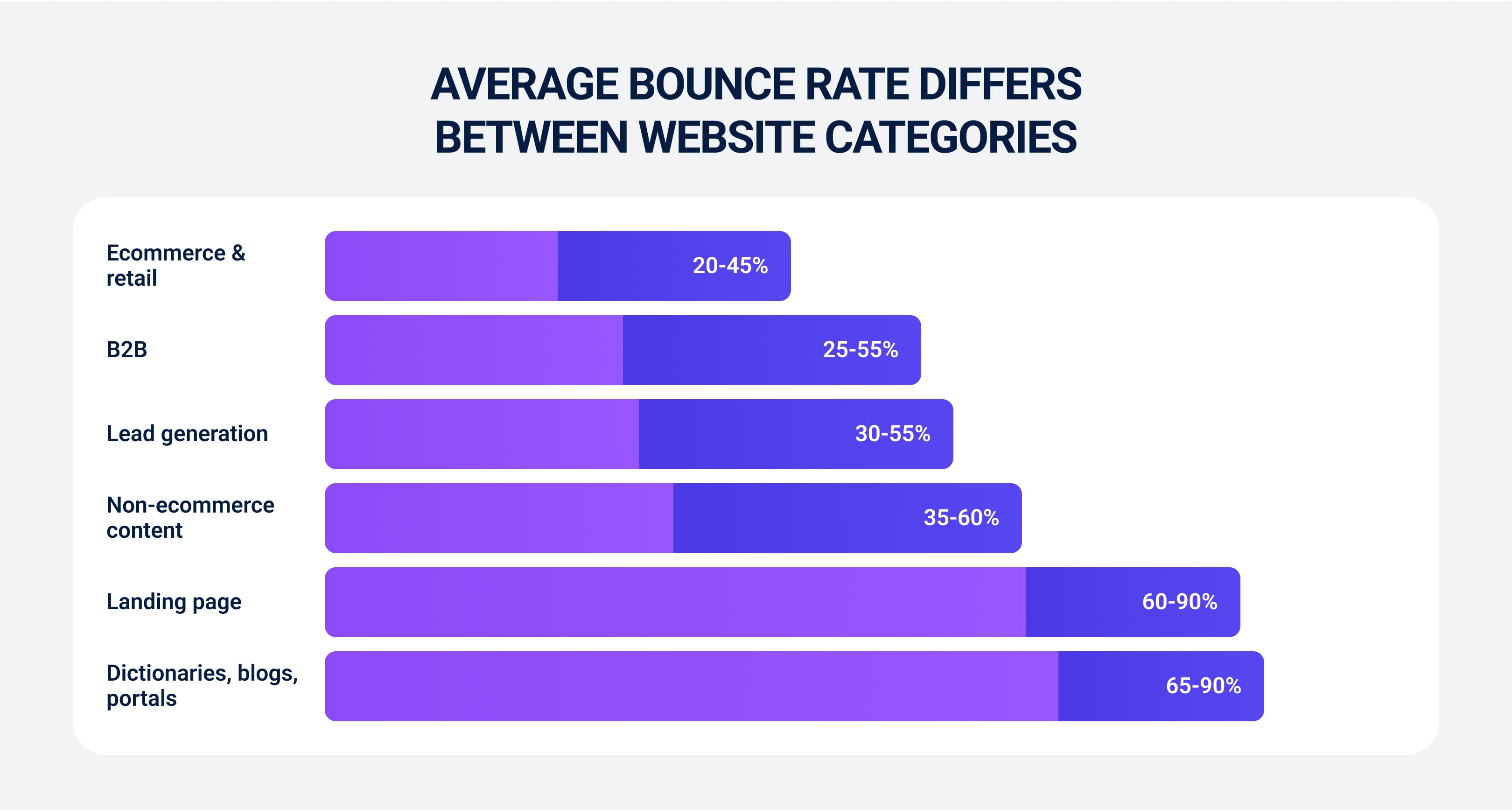
Fail to do this and you’ll fail to convert. We all know what it’s like to visit a bad website. It’s off-putting, right?
Poor site design:
- Lowers conversions
- Prevents trust
- Weakens SEO rankings
Weak Design Creates Long-Term Problems
Starting out with a weak website design has several negative long-term consequences.
Poor-performing sites tend to lead to a high bounce rate (in other words, visitors leave before clicking anything). That means:
- Fewer sales
- Less ROI
Plus, what if you have to redesign later on? That’ll not only eat away at your budget but completely halt your ability to continue marketing and selling in the meantime.
You Need a Partner, Not Only a Vendor
Anyone can create a functional, reasonably attractive website using a website builder these days. However, if you go down that route, you might soon discover that there’s a lot more to a successful website than visuals.
Amateurs and first-timers often focus too much on aesthetics. Assuming you’re selling something and not just making a portfolio, your website will be a complex machine with many moving parts.
The best website design agencies understand this. They’ll take the time to discuss your business goals and figure out exactly how to achieve them through your site. A great web designer will seek to understand your:
- Strategy
- Structure
- Messaging
Where to Find Reputable Web Design Companies
You might know what to look for when hiring a web design company. But where to look is another matter.
Our list of tried-and-tested sites and platforms is your best bet, so start here:
Curated Platforms
As a first port of call, you can’t go far wrong with a curated B2B directory. The great thing about these platforms is they pre-vet professional web design agencies before including them on the platform, so as well as just a name and number, you get reviews and project details, too.
Here are some good platforms to check:
- Clutch.co - one of the most trusted directories around. Clutch actually verifies client reviews through interviews, which makes their results very reliable. Plus, you can filter by industry, budget, location, services offered, and client reviews for personalized results!
- DesignRush - focuses on creative and tech firms with a clean UI and agency rankings. It also lets you filter by budget range, client type, and expertise area.
- Sortlist - a matchmaking-style platform that uses your project brief to suggest agency fits. Great for narrowing down based on verticals like healthcare, finance, or SaaS and collaboration models.
- The Manifest - a sister site to Clutch with a focus on concise agency shortlists and quick-read case studies. Ideal if you're short on time and want pre-qualified options fast.
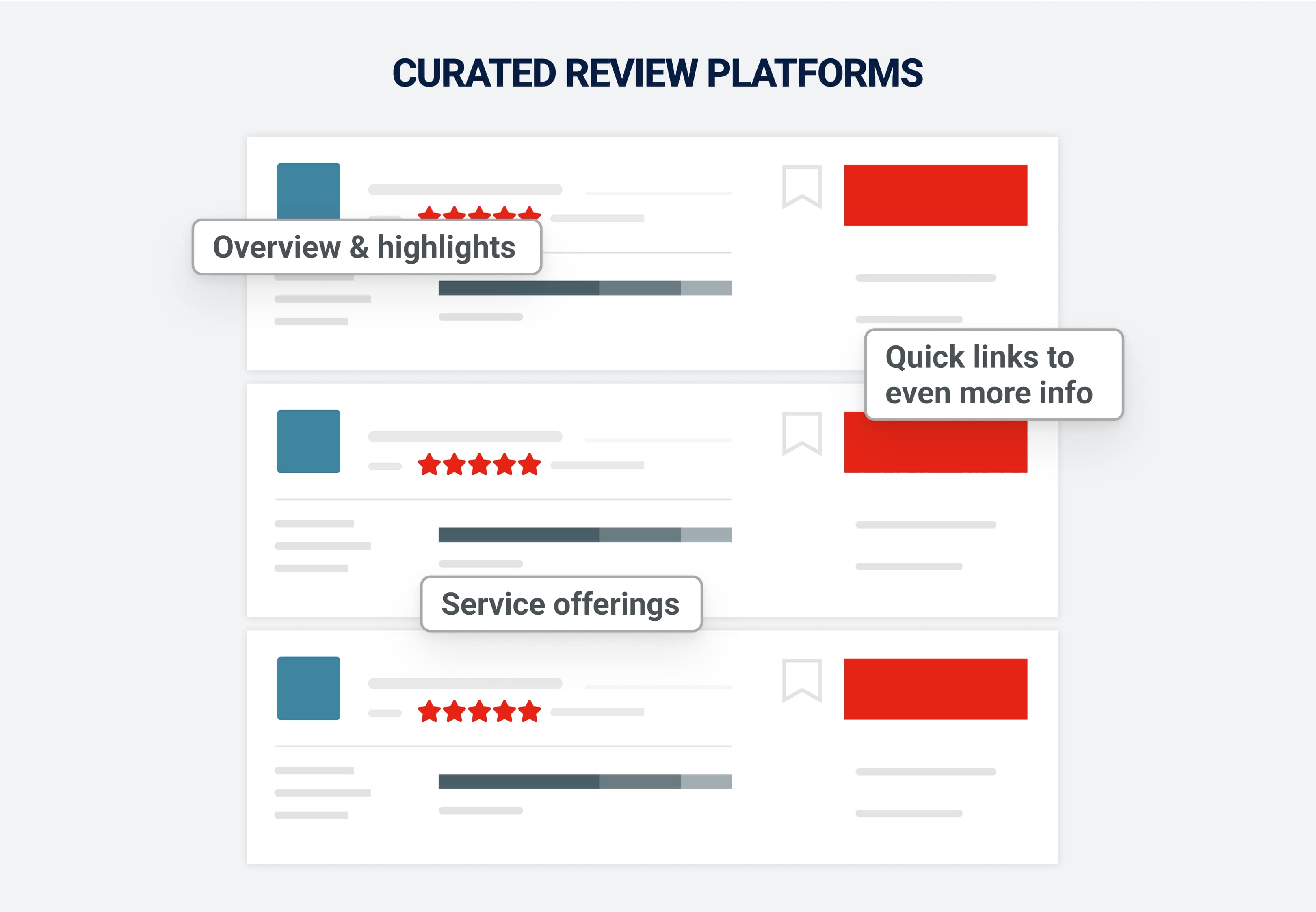
Creative-Focused Portfolios
We don’t recommend focusing on aesthetics over expert content. However, visual quality and brand identity should still be top priorities. So if you’re looking for designers who can really pack a punch, head to platforms where designers and creative teams showcase their work.
Here are two great options:
- Behance - you’ll see from the homepage that visuals are a strong focus on Behance. These portfolios often show deep branding work, interactive mockups, and UI/UX prototypes. The site is trusted by many leading creatives!
- Dribbble - Dribbble is also a leading light when it comes to visual design. You can filter by location, team vs. freelancer, and skills. Many top studios and indie teams maintain active profiles here, so you’ll be spoilt for choice!
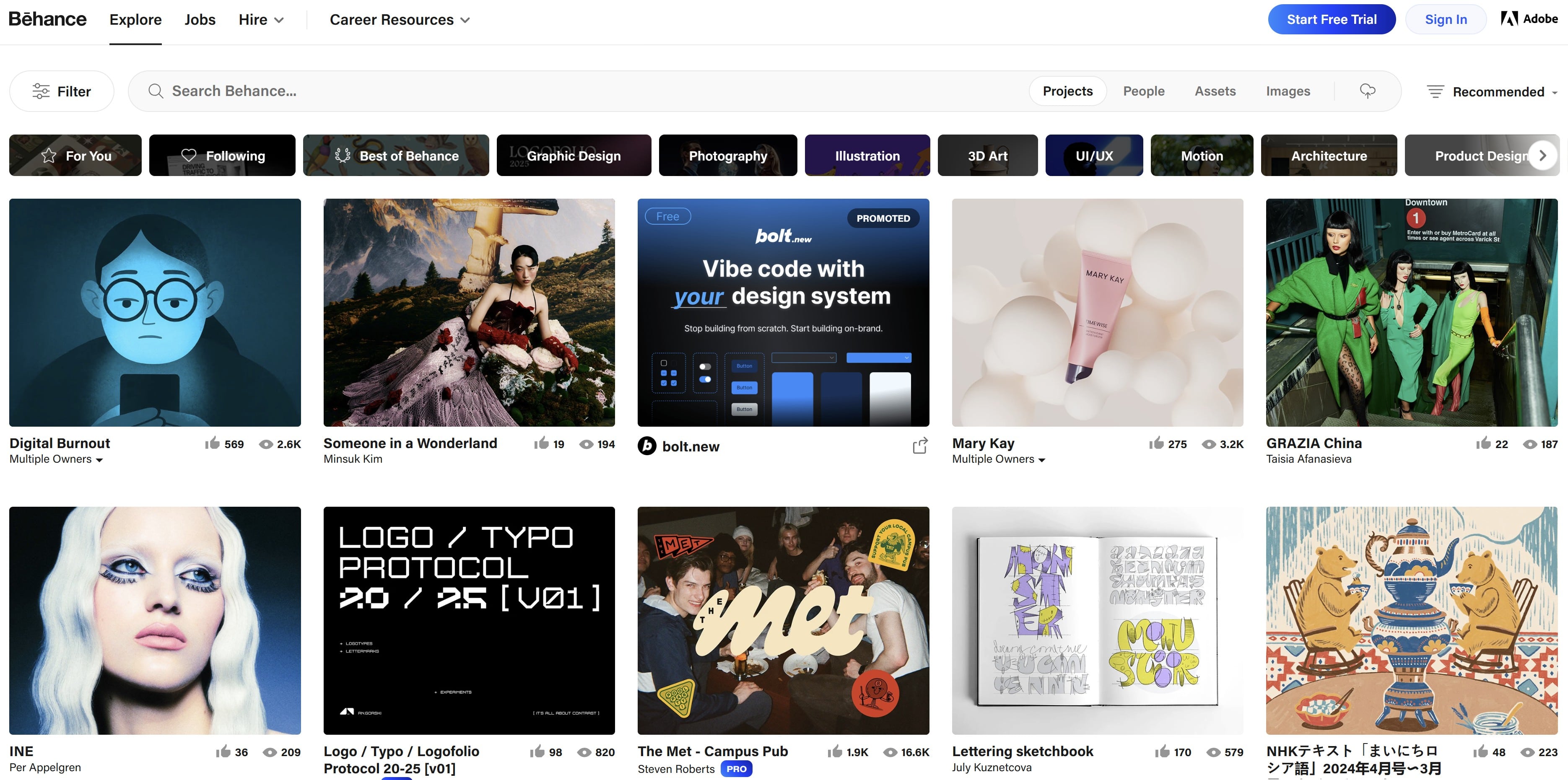
Founder Networks, CMOs & Slack Communities
No review is as influential as a peer referral. It’s often the most reliable way to cut to the chase and find an agency that actually delivers fast.
There are multiple places you can discuss these kinds of questions. We’d recommend heading to:
- Founder groups (YPO, EO, SaaS Founder Slack, Indie Hackers) - simply sign up and ask other founders who they trust for web design. This is where you’re most likely to get honest, no-BS feedback.
- CMO circles or marketing leadership Slack groups - many top marketers keep a vetted list of agencies they’ve worked with. These groups often have channels dedicated to vendor recommendations.
- Private communities (Trends by The Hustle, Superpath, RevGenius) - fantastic ecosystems packed with operators willing to share referrals and tips.
What a Strong Portfolio Should Tell You
You’ll likely see dozens, maybe hundreds, of portfolios over the next few weeks if you’re searching for a web design company. But it can be hard to separate the good from the bad if you don’t know what you’re looking for. Many portfolios can dazzle you with optics but disappoint you with delivery!
Here’s what a great portfolio will tell you:
- Technical scope - whether they’ve worked on sites with complex designs (like multilingual options or booking systems).
- Past results - exactly how they’ve impacted business outcomes in the past - not just platitudes, you want real numbers.
- UX thinking & process - how do they go about the design process? Do they show wireframes and prototypes? Do they user-test?
- Team involvement - make sure the same team (or core people) are handling design and website development so everything remains consistent. Do they outsource work?
- Range - what industries has the company worked in and how do they adapt to different needs?
Quick tip: Ask! If you’re ever unsure about any aspect of the company’s operations, simply ask them to walk you through the process!
Critical Skills and Tools Every Web Design Company Should Have
Process and attitude go a long way in web design. That said, there are a few technical skills and tools every web design company should have/use. Without these, expect delays and hiccoughs along the way.
Front-End and Back-End Development Skills
Any reputable web design company will be skilled in the full spectrum of site building. That includes:
- Front-end development - proficiency in HTML5, CSS3, JavaScript, and modern frameworks like React, Vue.js, or Tailwind CSS for responsive, interactive interfaces.
- Back-end development - experience with languages and frameworks such as PHP, Node.js, Ruby on Rails, or Python (Django/Flask) to power dynamic and secure applications.
- CMS integration - they shouldn’t force your content into templates that don’t work. They should be able to customize and extend platforms like WordPress, Shopify, or headless CMSs to fit your business needs.#
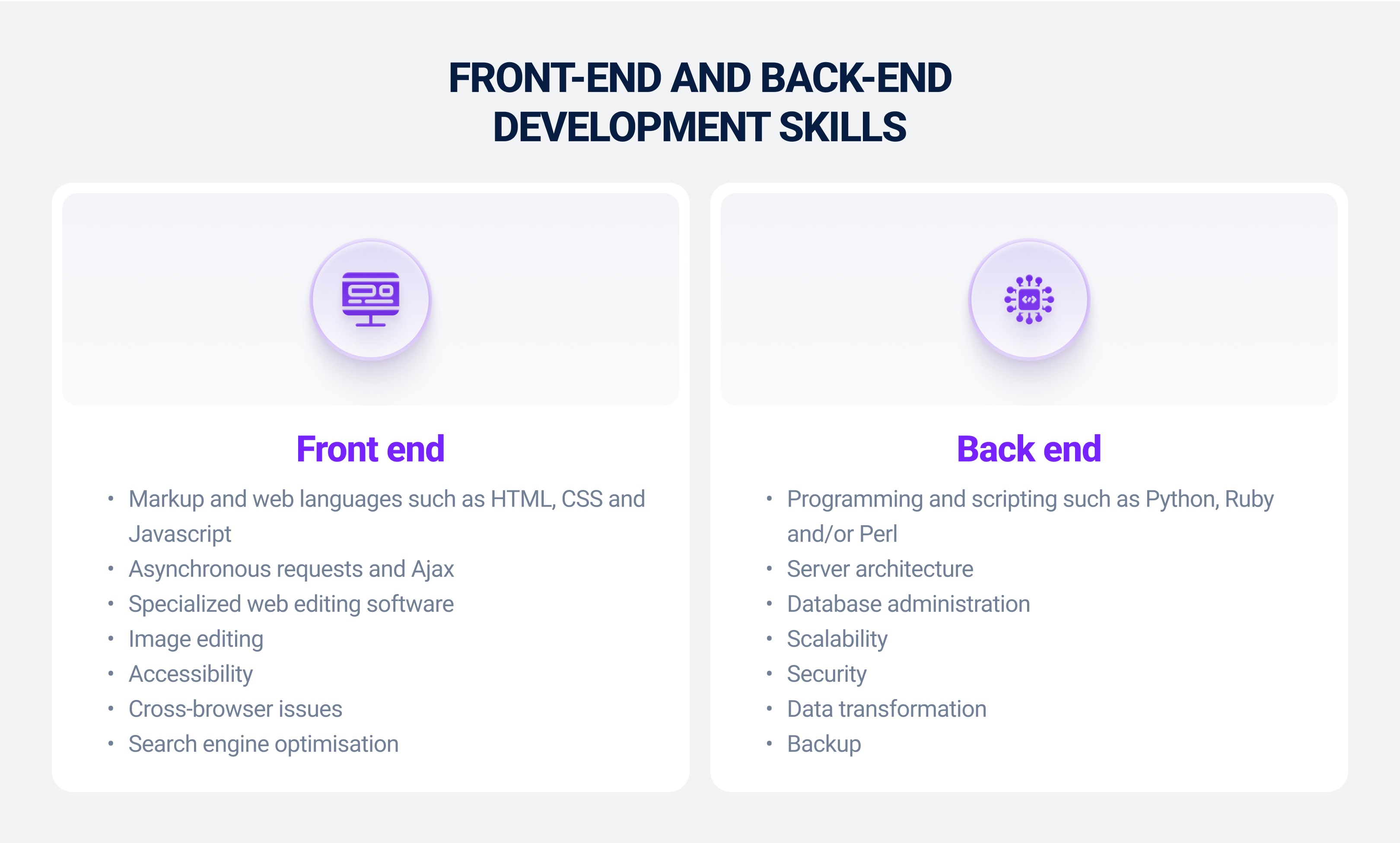
UX and CRO Expertise
Great design works for the user and brings top results.
- User Experience (UX) - every great web design company understands how to make a site easily navigable and intuitive in order to reduce friction and improve satisfaction.
- Conversion Rate Optimization (CRO) - you want to know what’s working and what’s not. So CRO tools like A/B testing, heatmaps, scroll tracking, and optimized CTAs are essential.
- Accessibility - a great design is one that works across devices and for all users. Look for compliance with WCAG standards for inclusive design.

SEO Integration From Day One
For many, SEO means adding keywords into content. But there’s a lot more to it than that. Pro web designers will bake SEO right into design from the start. This will improve your SERPs results enormously.
Here’s what that means:
- Structured markup - use of schema.org tags for rich snippets and better context.
- Crawlability - clean code, XML sitemaps, robots.txt configurations, and logical URL structures.
- Metadata setup - proper titles, meta descriptions, alt tags, and Open Graph for social sharing.
- Core Web Vitals optimization - you want minimal input delay, as well as fast load times and responsive layout shifts.
- Content hierarchy & internal linking - clear use of H1-H6 tags, semantic HTML, and strategically placed internal links for SEO and user navigation are all essential.
Platform and Tech Stack Proficiency
Every web design company will have its preference for tools. However, the best ones will go the extra mile to align their tech stack with your business needs, not the other way around.
Here’s where that could really make a difference:
- CMS platforms - you might need WordPress, Webflow, Shopify, Craft CMS, Sanity, or even custom headless builds for your needs. A great company can handle that.
- E-commerce systems - selling on your site? There are multiple e-commerce systems available (Shopify, WooCommerce, BigCommerce, even custom-built).
- Hosting and DevOps - look for familiarity with platforms like Vercel, Netlify, AWS, or DigitalOcean for smooth deployment and scalability.
- No-code & low-code - the ability to leverage modern tools (like Webflow or Framer) for agile, design-driven builds when appropriate is a must.
QA, Security, and Testing Process
Around 80% of visitors will leave non-secure websites. Even more will leave a site that’s not responsive. So, it’s essential to build a site that’s secure and bug-free and delivers consistently across browsers.
A reliable agency will deliver:
- Cross-browser & device testing - using tools like BrowserStack or manual QA to ensure consistency across Chrome, Safari, Firefox, and mobile browsers.
- Security best practices - HTTPS setup, secure form handling, protection against common vulnerabilities will be included.
- Performance auditing - regular checks with tools like Lighthouse or PageSpeed Insights for speed.
- Staging & rollbacks - version control via GitHub/GitLab and proper staging environments for safe deployment.
- Ongoing maintenance - a site is never “finished”. You want a partner that will provide post-launch support to handle updates and patches as needed.
WE ARE A REVENUE-GENERATING UI/UX & WEB DESIGN AGENCY
Your website is your first impression. With functional design, clean code, and seamless UX, we build high-converting websites.
Let's talk - Schedule a call with our expert team today to see how we can help!
The 7 Steps to Choose the Right Web Design Company
There’s a lot to look out for when it comes to an agency’s technical ability. But that’s only part of the equation. When it comes to tips for choosing a web design company, we should also highlight that you'll need a watertight internal process that will cover all the bases and ensure nothing gets missed.
Define the Purpose of Your Website
The truth is, many new companies build a website simply because they feel they should have one. But those websites tend to lack direction.
Ask yourself what your website is really trying to achieve. Is its main purpose to:
- Increase brand awareness?
- Create a brand identity?
- Convert customers?
- Showcase your work?
- Guide visitors through a funnel?
In web design, purpose equals success.
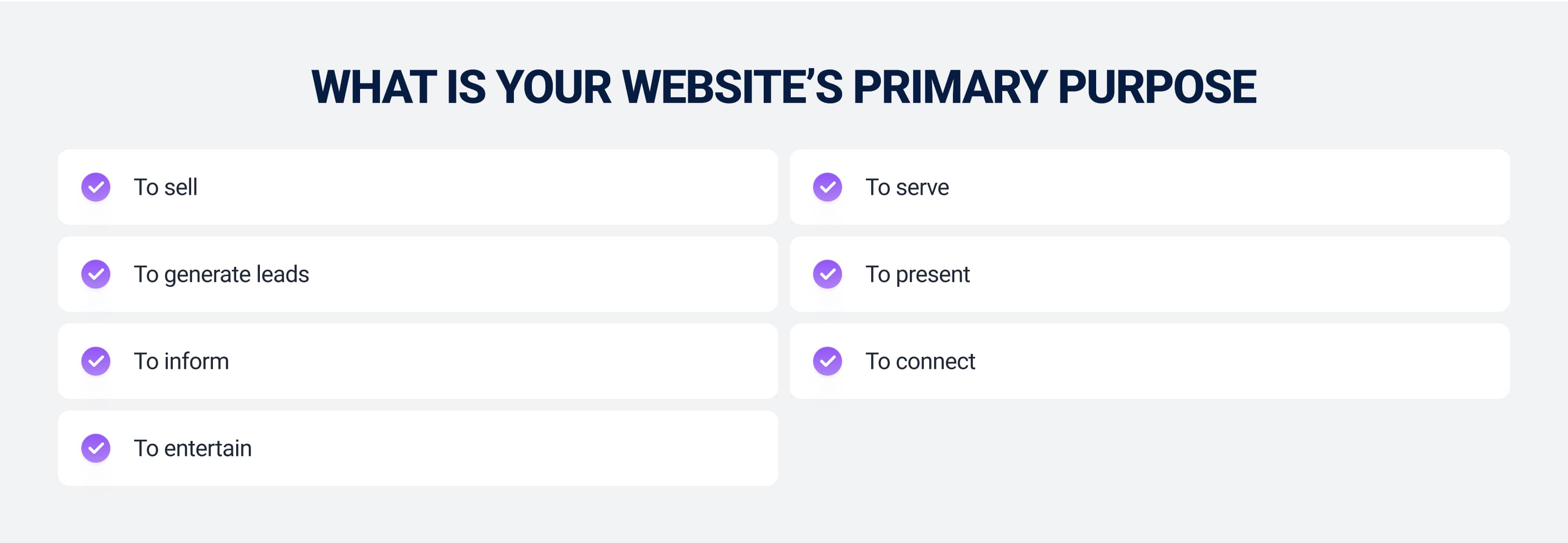
Outline the Features You Need
When you know your website’s core purpose, you can go about listing the features you really need. Don’t get bogged down in features that are simply “cool to have”. Focus on the features that will really make your goals a reality.
Consider these:
- Pricing pages
- Blogs
- Testimonials
- Contact pages
- Product pages
- Information about your history
- Your brand values
- Links to socials
- Demos
You might only need a few of the above elements, or you might need all of them (plus others)!
Set a Realistic Budget and Timeline
Spelling out specific targets helps you and the web design company stay on track and communicate more effectively.
The first thing to do is to calculate a serious budget. Take into account the fact that costs can spill over and there may be unexpected expenses (aside from the designer’s fee).
When it comes to timelines, don’t rush. It’s better to take more time and end up with a great site than rush it and end up with a mess. Don’t forget: a deadline doesn’t have to be when you want the site up and running. You can set mini deadlines along the way (like “we want a prototype by X/X/X”).
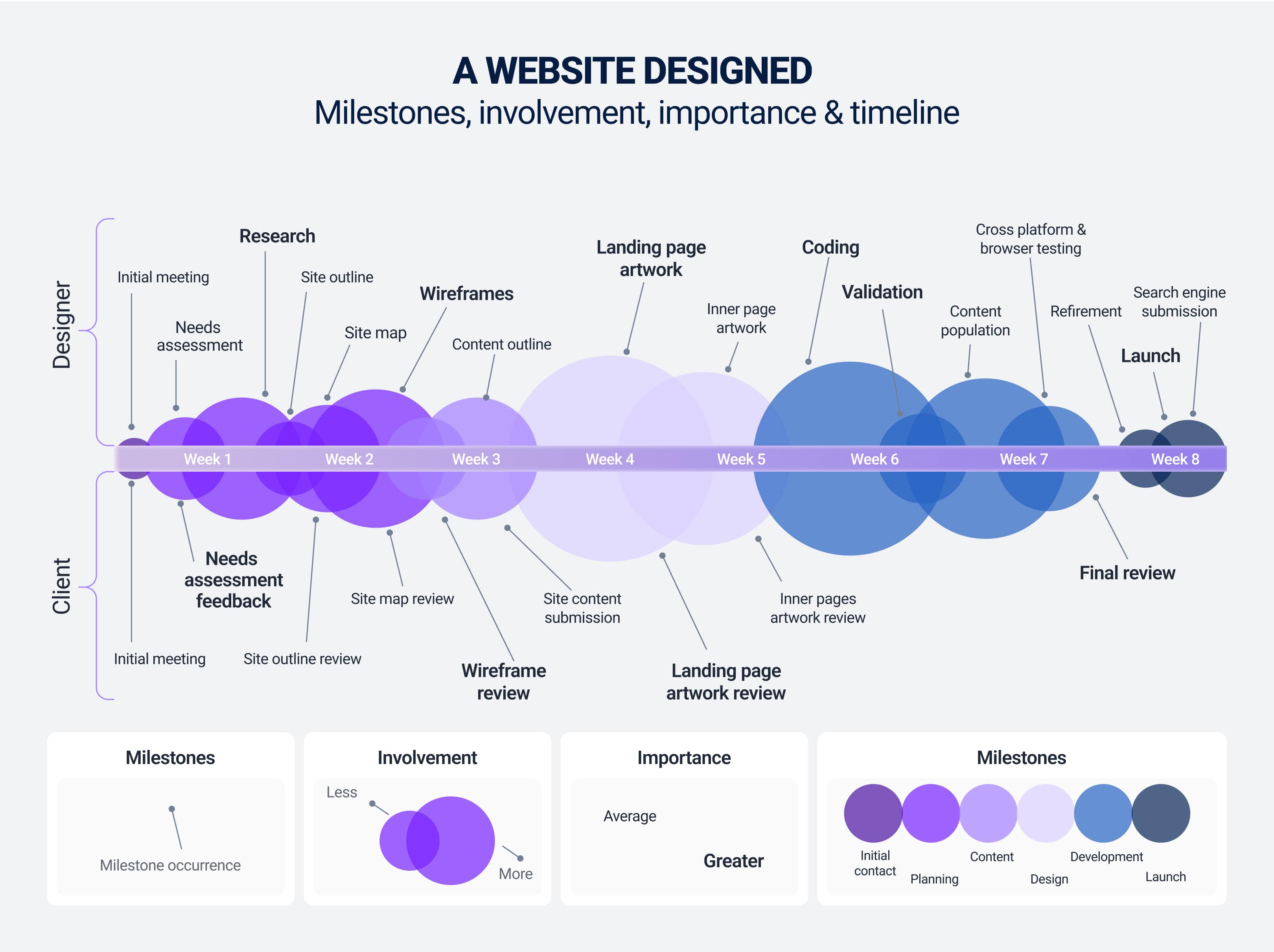
Build a Shortlist of Agencies
Don’t settle on the first agency you come across - even if you actually think they’re a great fit. The more you research, the more options you’ll find.
So, take the time to build a shortlist of web design companies. Carefully evaluate their pros and cons. Include other team members in this process, too.
Evaluate the Portfolio Strategically
Don’t get dazzled by visuals. Go through all the technical specifications and see what’s really on offer.
Most importantly, evaluate the aspects that matter most to you. If you’re planning to sell physical products, see what the company’s e-commerce capabilities/experience are. If you’re inexperienced in web design, see how extensive their service is (do they offer post-launch support?) Does the web design team work super closely with your internal teams or would you rather hand the project off completely?
Ask Smart Questions During Discovery
Go beyond “what have you worked on before?” Every agency, even the bad ones, will have an answer to this question. And those answers will tell you nothing about their real capabilities.
Instead, try deeper questions, like:
- “How do you align your design process with business objectives like lead generation, sales, or brand awareness?”
- “Can you walk me through a project you did for a company similar to ours? What results did it achieve?”
- “How do you define success for a website launch?”
- “What’s your UX process and how do you validate it with real users or data?”
- “How do you handle accessibility (ADA/WCAG compliance) in your design?”
- “What’s your approach to mobile-first or responsive design?”
- “Do you handle both design and development in-house? If not, who builds the final site?”
- “Which CMS or platform do you recommend for our project and why?”
- “How do you set up analytics and track conversions post-launch?”
Those are just a few ideas, but the key thing to remember is: get specifics. Ask vague questions, get vague answers, see vague results.
Read the Proposal Carefully
Expectations are key to partnerships. It can be exciting when a proposal from a promising web design company comes through, but you shouldn’t rush to sign the dotted line.
You want to know exactly what you’re signing up for. Make sure you know what the deliverables are and clear up any timeline queries. Make sure you and the company are on the same page and don’t be afraid to raise questions before you sign!
Red Flags That Signal Trouble
Choosing the right web design company can take time. But it’s worth staying patient, because choosing the wrong one can cost you more than time and money. It can also seriously damage your momentum.
Luckily, there are a few “red flags” you can watch out for to save you from going down the wrong road. These signs don’t necessarily mean the web design company is a bad one, only that it’s not the right company for you!
No Timeline or Process Transparency
When you ask about timelines, you want crystal-clear answers. If the web design company in question can’t give you those, you could end up in a whole load of trouble.
Look out for:
- Vague or overly optimistic timelines with no defined phases
- No mention of milestones or review points
- Unclear expectations for who delivers what, or when you’ll hear from them next
Template Designs Posing as Custom Work
Sadly, we see this a lot. Especially from younger web design companies just trying to make a quick buck. These companies will essentially use a prebuilt template, switch some things around, and call it “custom”. In reality, there are thousands of sites just like it - and it won’t deliver where you need it to.
Look out for:
- Portfolio samples that look suspiciously similar in layout or structure
- Not showing early-stage artifacts like wireframes or design iterations
- No discussion about your brand strategy or differentiators
Avoidance of Ownership or Post-Launch Support
Some companies retain ownership even after launch. In that case, you’d be at the company’s mercy for every edit and likely have to invest in building a whole new site!
Look out for:
- Hesitation or vagueness about who owns the code and domain
- No clear plan for training your team or offering support after launch
- Being locked into a proprietary system or builder with no way to migrate elsewhere
No Clear Strategy Behind the Visuals
“Web design” encompasses the entire process of creating a functional and results-driven website. Unfortunately, many web design companies focus instead on visual design only. They’ll charge you the same amount, but in return all you’ll get is a pretty picture.
Look out for:
- Teams that focus solely on colors and layout at the expense of flow and conversions
- No evidence of user research or audience insights
- No mention of how the design supports measurable outcomes
Final Checklist Before You Choose a Website Design Company
This checklist is designed by professional marketers at Influize with businesses like yours in mind. So, if you’re closing in on a particular company, head back here and go through this list before signing!
Process Is Strategic and Documented
A hands-off approach is fine, but you should still know what the company is doing while you’re not looking. In other words: make sure you know exactly what happens between kickoff and launch.
A great web design company will be happy to lay out exactly how a project moves from discovery to design to launch and how they make key decisions along the way.
Make sure:
- You’ve seen a breakdown of their full process, including timelines and phases
- Discovery includes user research, brand alignment, or goal mapping
- They’ve explained how they gather feedback and iterate at each step

Scope, Pricing, and Revisions Are Clearly Defined
Projects rarely roll out exactly as planned. It’s no different for web design. Often, clients need to add or change things mid-project. You should check how this process works before you hire a company - otherwise, you could be left out of pocket.
It’s all about avoiding surprises halfway through. You want to know exactly what’s included and how revisions work from the off.
Check:
- The proposal details what’s in scope
- Costs are itemized
- There’s a clear policy on rounds of revisions
Portfolio Shows Performance and User Flow
A great sign of any web design company is that their sites work hard for the businesses behind them and look great doing it. Remember, visual polish plus measurable outcomes are what makes a company the real deal.
Make sure:
- You’ve seen case studies or projects with clear goals
- Designs are tailored to brand and audience
- Sites feel intuitive and consistent across devices

Communication Is Responsive and Professional
Outside the technical bounds of their capabilities, you want the agency you partner with to have strong communication skills, too. Web design projects can take three months or more. During that time, you want to feel heard and respected - and be kept in the loop.
See if:
- They respond to emails and questions promptly and clearly
- You know who your point of contact is and how communication will be managed
- They ask thoughtful questions about your business
Final Takeaways
A great web design company can work wonders. The best companies will take the time to understand your business and its needs and create a professional site that looks great and delivers where it needs to.
Stick to our advice and follow our tips and the process doesn’t have to be a chore. Soon, you’ll have a pro website that customers can’t turn away from!
You can cut your search short right now by learning more about Influize’s professional UI/UX and web design service. With a proven track record of measurable business success, our experts tick every web design box.
Frequently Asked Questions
How do I evaluate a web design company’s portfolio?
It can take a while. First off, you want to see if the company’s past work is varied and that each design matches its intended audience. If designs are too similar, it could indicate a lack of creativity. Also take note of things like how navigable the site is and how well it guides users to specific actions.
How do I compare web design pricing and packages?
This can be tricky, as prices for web design vary a lot. Firstly, you should take into account the scope of work. In other words, what are you actually getting for your money (is it 5 pages or 25?) Then, consider the pricing model. Is it a fixed price or an hourly rate, for instance?
Finally, think about value. The price isn’t necessarily the most important thing. Whether or not the company can deliver where you need it to is. You can spend thousands on a bad site or less on a great one.
How long should a professional web design project take?
It really depends on the site in question. Basic marketing sites can take just 4-8 weeks to complete, whereas a mid-sized business site might take around 8-12 weeks. A truly comprehensive enterprise or SaaS platform can take even longer (sometimes longer than 6 months).

